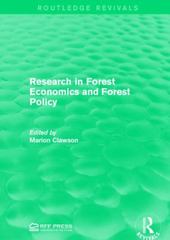Question
Short-Answer and Algebraic Questions: (The numbers in square brackets give the breakdown of the points for various parts of each question. To receive full credit,
Short-Answer and Algebraic Questions:(The numbers in square brackets give the breakdown of the points for various parts of each question. To receive full credit, please explain your answers. Total of 60 points.)
1.In 2019, Vietnamese economy's real GDP,Y, was3,738.6 trillion Vietnamese dong,its GDP deflator,P, was 1.6, and its money supply,Ms, was 2,456.7trillion dongs. The nominal interest rate,i, was 6 percent (i= 0.06), and the money market was in equilibrium. As you know from Module 4 materials, money demand is represented byMd= kPY/i, wherekis the propensity to hold money.
(a)What was thepropensity to hold money in Vietnamduring 2019 (i.e., what wask)?Please round the answer to 4 decimal points and show your calculations.[5]
Answer:
(b)In 2020, because of COVID-19 pandemic Vietnam's real GDP growth slowed down, but still managed to grow at 2 percent. GDP deflator also grew by 2 percent, but the interest rate declined to 4 percent. If thepropensity to hold money remained the same as in2019, which you calculated in (a) above, by what percent money supply must have grown?Please express your answer as a percentage, round to one digit after the decimal point, and show your calculations. (For example, you would show 0.3456 as 34.6%)[10]
Answer:
(c)In question 1(b) in 2020 when thepropensity to hold money remained the same as in2019 and real GDP and the deflator grow both at the rate of 2 percent, if the central bank of Vietnam wanted to keep the nominal interest rate constant at 6 percent as in 2019, at what rate should it have increased the money supply? Assume no change inkand same changes inPandYas in the setting for question 1(b).Please express your answer as a percentage, round to one digit after the decimal point, and show your calculations. (For example, you would show 0.3456 as 34.6%)[5]
Answer:
2.This question is based on the article, "Yield-curve control could prove a useful tool in the next recession," published byThe Economiston February 1, 2020. The article discusses the effectiveness of conventional and unconventional monetary policies and asks whether additional policy tools may be needed for dealing with the next recession.
Conventional monetary policies consist of open market operations and the discount rate and minimum reserve requirement adjustments, all of which are aimed at guiding short-term interest rates to desirable ranges. The unconventional monetary policies are other tools that central banks may use. The article mentions three unconventional monetary policies, namely, negative interest rates, quantitative easing (QE), and yield curve control.
(a)According to the article, what are the reasons why central banks have turned to unconventional monetary policies in the past two decades? [6] What countries have experienced the limitations of conventional monetary policy tools in the past two decades, and what events have prompted the wider use of unconventional tools? [3]
Answer:
(b)According to the article, have negative interest rate policy been implemented anywhere? [3] What are the disadvantages of negative interest rates as an unconventional monetary policy tool? [6]
Answer:
(c)According to the article, how does quantitative easing work? What is the difference between QE and open market operations? What are the limitations of QE? [13]
Answer:
(d)According to the article, how does yield curve control work? What are the similarities and differences of yield curve control with the open market operations? [9]
Answer:
Step by Step Solution
There are 3 Steps involved in it
Step: 1

Get Instant Access to Expert-Tailored Solutions
See step-by-step solutions with expert insights and AI powered tools for academic success
Step: 2

Step: 3

Ace Your Homework with AI
Get the answers you need in no time with our AI-driven, step-by-step assistance
Get Started


